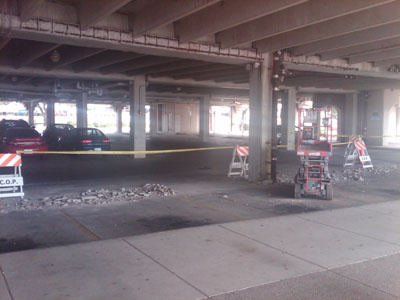Developer Gary Matthews has written a letter to the Mayor and City Council asking them not to cancel the redevelopment agreement:
The gist of the letter is that Matthews felt he had provided everything to the City that was requested, and that as a result of certain meetings he was led to believe he was meeting the terms of the redevelopment agreement to the City’s satisfaction. The December 31, 2010, deadline stipulated in the redevelopment agreement remains unaddressed and unacknowledged. He concludes:
I know and understand we are all suffering from some “hotel fatigue.” I apologize for adding to that fatigue but I feel it is necessary that you have accurate information. Yes, it has been a long, arduous journey, but we are on the cusp of what can be a very historic project. The budget has gone through many transitions as obstacles were confronted (e.g., the inability to secure new market tax credits for a hotel project in a middle sized city) but again and again, with cooperation from lenders (agreeing to better terms), sellers (agreeing to assist with financing), tax credit investors (agreeing to higher purchase prices) and us agreeing to defer the developer’s fee, new options were created to make the project successful. Also, as you know, the State of Illinois adopted a pilot State Historic Rehabilitation Tax Credit program specifically for this project. Failure to close when we are so close will result in the loss of these credits and a missed opportunity for the City.
This project is a transformative and catalytic project for the Peoria region. Its construction will not only create jobs, but help also revitalize the downtown and surrounding Peoria areas by encouraging and influencing development resulting in a positive community and economic impact.
Pretty good sales pitch, except here we are over two and half years after we first heard it and the project has yet to start. Keep in mind that the first redevelopment agreement from December 2008 was never fulfilled. In May 2010, when the latest agreement was made, Matthews told the council that he would be drawing on the $37 million grant from the city “immediately in 2010,” something he could only do subsequent to closing on the properties. He further said that work on the Pere Marquette would begin “immediately after closing.” He also assured the Council at that time that he had all his financing in place. Now it’s September 2011, and the Council receives a letter with more promises and assurances that everything is in place and ready to start. I’m beginning to see a pattern.
Matthews stands to make $9 million from this deal, and he has already racked up no small amount of money on attorney’s fees, architect fees, marketing, etc. It’s very important to him that this deal go through. But he has consistently missed deadlines and shown an inability to get the project started. His apologists blame this failure on the economy. But I have news for you: the economy isn’t getting any better.
The City is doing the right thing by cutting its losses on this project. Even if they have to pay Matthews a settlement to help defray some of his expenses (I would suggest only those expenses incurred from the December 31 deadline to the present), they would be money ahead.икони



